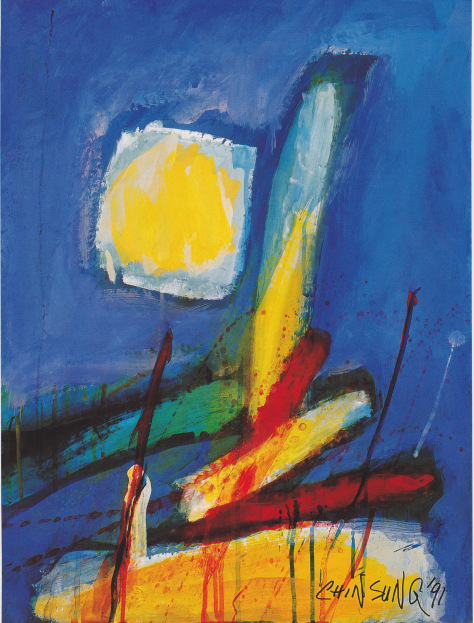Here of late my work returns to the abstract. Below two images and two poems, all by once New York-based Chin Sung (Qin Song). The first is a strikingly experimental poem (“Black Rain”) from 1950, following an image (“Black Forest”) from 1959, then an acrylic painting from 1991 (“Variations”) followed by a poem from 2000 “Notes of a Market Goer”. More on Qin’s biography, etc. in subsequent post.
Tag Archives: art
art documentaries : Chimeras in the mix
Another year another China art documentary, focusing on questions of identity, or, as Wang Guangyi asks in Finnish film director Mika Mattila’s Chimera: “what are our roots?”
The question itself continues to inspire new documentary work, but not, perhaps, much discussion or even interest (at least not for me). I remain intrigued, however, by filmmakers who are able to take this topic as the subject of their art, in other words, film artists who make art the fodder for their art. The arrangement is curious in that so much of what is compelling about such work is derived, if not flat out stolen, from someone else’s creative work. Where would, in other words, Mattila really be without Wang Guangyi and Liu Gang, who in most media reports (LA Times, for instance) are the headliners anyway, with the ‘real’ artist–the filmmaker–relegated to round about paragraph three. Journalists can see proportionality in this case of creative production, anyway.
The question is somewhat personal, I suppose, as I’ve endeavored off and on to tackle Zhong Biao in documentary format. Whether or not the project ever comes to fruition, I am certain that the better part of what emerges as watchable (耐看) will stem from his painting, or other products from his fundamentally creative hand. The structure, rhetoric, even cinematographic dimensions of my work would all rightly be upstaged by the artist or artists in question.
Robert Adanto’s work, discussed elsewhere on this blog, is also a case in point, but in watching that work we are forced to admit a certain spectrum of truth to the proposition that the documentarian of art is a thief of sorts, particularly when compared with Alison Klayman’s work on Ai Weiwei, a more modest, and therefore artistically thin operation. Yet in either case there is something there, in the art of the art, something beyond mere convenience (documentarian travels to locales we cannot in order to bring back the goods of what’s good), something expressive and individual, self-deprecating by design, but occasionally aesthetically there in the mind’s eye of the viewer.
And so it will be with Chimeras, I expect. I’m looking forward to seeing it when it comes to town.

